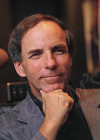HOME | ABOUT US | MEDIA KIT | CONTACT US | INQUIRE
HOME | ABOUT US | MEDIA KIT | CONTACT US | INQUIRE
The slayings of two international researchers are a grim reminder that bromides from public officials aren’t coming close to a solution.

As crime in the Kansas City area continues to flourish, will the murder of two scientists change the mayor’s view on crime and policing in the community?
In the early morning hours of Oct. 1, firefighters were called to the scene of a blaze in the Midtown neighborhood of Kansas City. Inside the smoldering apartment, they found the bodies of Camila Behrensen, 24, and Pablo Guzman-Palma, 25, both scientists at the city’s nearby Stowers Institute for Medical Research.
The fire was not what killed the pair, the Kansas City Police Department says.
After entering the apartment to extinguish the fire, KCFD located two victims inside, a police spokesman said in a prepared statement. All indications are that the pair, whose bodies showed signs of trauma, had been murdered before the fire was set.
The fact that Behrensen was from Argentina and Guzman-Palma from Chile will make it that much harder for Mayor Quinton Lucas to pacify international media with his disingenuous bromides.
“I think in the short term it will certainly start a dialogue of the involved countries and the United States,” retired FBI agent Michael Tabman told 41 KSHB. “They’ll want security for their people.”
A Promise Unkept
When Lucas first ran for mayor in 2019, he put fighting crime at the center of his campaign. Specifically, he promised to bring the annual homicide count down to below 100. As an African American, he convinced many voters he would have more moral authority to tackle the crime issue than the liberal female who ran against him.
The voters did not get their ballots’ worth.
Lucas was sworn in on Aug. 1, 2019. In that year, Kansas City suffered 148 homicides–up from 138 the year before. In 2020, the homicide rate shot up to a record 179 in the wake of George Floyd’s death in Minneapolis.
The fact that Lucas took a knee with the protestors who were then tearing up the city during the Floyd-inspired riots did not have the calming effect the mayor likely intended–nor did his gesture reassure police that he had their backs. As events would prove, he did not.
In 2021, the body count in Kansas City subsided a bit to 157, though still 19 more than the year Lucas took office. As usual, black Kansas Citians suffered most. In a city roughly one-third black, 78 percent of the murder victims were African American.
Although the calculus for “suspects” is not nearly as reliable as that for victims, at least 84 percent of the suspects were black.
Lucas has been freely pontificating about the causes of crime since he took office. For him, the word “gun” almost always precedes the word “crime.”
“For those who don’t know the Midwest, we are not unlike Texas. We have no requirement for concealed carry permits,” Lucas told a reporter in July. “Folks can access assault rifles very simply. There is little to no investigation into illegal gun traffickers and distributors. And our police are not only overworked, but they find themselves at the risk of getting shot as well.”
This argument would work better if neighboring Kansas did not have the same constitutional-carry laws as Missouri. The numbers suggest gun laws are not a relevant factor.
For example, Johnson County, Kansas, runs parallel to Kansas City, Missouri, for about 11 miles, separated only by State Line Road. In 2021, Johnson County had just four homicides to Kansas City’s 157.
The numbers are even worse than they appear, in that Johnson County has roughly 100,000 more people.
In 2021, twice as many people in Kansas City were stabbed to death as were shot to death in Johnson County. In fact, more Kansas Citians were beaten or strangled to death than were shot to death in Johnson County.
The problem is not the law. Illinois has some of the toughest gun laws in the country, and Chicago’s are tougher still, and yet, as The Wall Street Journal observes, “Violence in Chicago is so routine these days that it barely registers as news.” The city had 797 murders in 2020.
An Honest Assessment
The problem is inner-city culture.
Unfortunately, Lucas has not even attempted to address the family dysfunction at the heart of Kansas City’s crime problem. An ambitious Democrat, he has followed the cues from party leadership and shifted the blame onto the police. In 2021, he unsuccessfully attempted to defund the police, and this year, he similarly proposed to take $37 million out of the police budget and give control of it to the city manager for a new “Community Policing and Prevention Fund.”
Never one to accept responsibility when it can be shirked, Lucas has argued he has no control over Jackson County prosecutor Jean Peters Baker. A party-line Democrat, Baker often seems more concerned with achieving “equity” than with reducing crime. If Lucas objects to her perceived leniency, however, he has not said so publicly. He prefers to use his bully pulpit to berate gun manufacturers and Republican lawmakers.
The murder of the two Stowers researchers brought the 2021 body count to 126, a near-record pace. Although the murders remain unsolved at this point, they are too public to ignore.
The voters may buy Lucas’ excuses when he runs for re-election in 2023, but the Stowers people may not, and that bodes ill for Kansas City.
Greetings, Marshall. We’ve forwarded your inquiry to Jack Cashill, who works from another office here in town. Let us know if you need anything else.
cheers,
Dennis Boone
Editorial Director